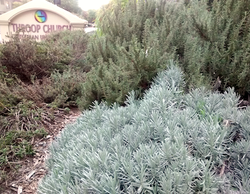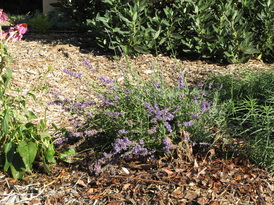Water

The drought deepens. As a result, Pasadena announced that landscape irrigation must be reduced to one day a week. Ironically, the Pasadena Star News reports that regional water usage actually increased several percentage points over last year, with the speculation that the spike was due to increased temperatures. We are now drawing more water from local aquifers as our allocations from other sources have plummeted. Aquifer drafts are a source of last resort, as it takes years to replace the water taken out. The trend of decreasing water availability as temperatures continue to rise will be with us for the foreseeable future.
So where does this leave us?
We strive to build our local resiliency through increasing grey water usage, installing viable rainwater catchment systems, and stacking water usage so each drop of potable water is recycled in landscapes. We are beginning to alter our consumption. However, this alone will not be enough if we experience a protracted drought.
The question looms larger. Can we alter our consumptive lifestyles soon enough to avert a major crisis? Can we all live in a way that we use resources mindfully and respectfully? Can we all agree to consciously set realistic limits on development and industries that consume massive amounts of water? Can we forego extravagant luxuries, like lawns, so that all may have enough? And can we rationally view the carrying capacity of the land and live within it?
We need a massive shift in awareness and action to thrive in our current climate.
We of Throop Learning Garden try to be water aware and cautious of our usage.The rainwater tank will be installed in the next few weeks and will augment our irrigation. Thick mulch, companion planting, and plant placement lessen the amount of water needed. But the garden has a bottom line in the water it needs. Can the garden survive if we come under severe water rationing?
My friends, if this sounds dire, it's because it is! So what are you doing to minimize your water footprint?
— January Nordman
California Drought Updates
Photo by Qrys Cunningham
So where does this leave us?
We strive to build our local resiliency through increasing grey water usage, installing viable rainwater catchment systems, and stacking water usage so each drop of potable water is recycled in landscapes. We are beginning to alter our consumption. However, this alone will not be enough if we experience a protracted drought.
The question looms larger. Can we alter our consumptive lifestyles soon enough to avert a major crisis? Can we all live in a way that we use resources mindfully and respectfully? Can we all agree to consciously set realistic limits on development and industries that consume massive amounts of water? Can we forego extravagant luxuries, like lawns, so that all may have enough? And can we rationally view the carrying capacity of the land and live within it?
We need a massive shift in awareness and action to thrive in our current climate.
We of Throop Learning Garden try to be water aware and cautious of our usage.The rainwater tank will be installed in the next few weeks and will augment our irrigation. Thick mulch, companion planting, and plant placement lessen the amount of water needed. But the garden has a bottom line in the water it needs. Can the garden survive if we come under severe water rationing?
My friends, if this sounds dire, it's because it is! So what are you doing to minimize your water footprint?
— January Nordman
California Drought Updates
Photo by Qrys Cunningham





